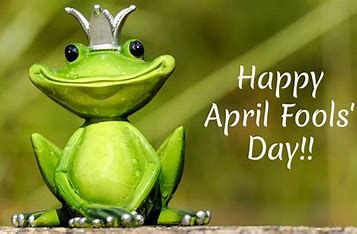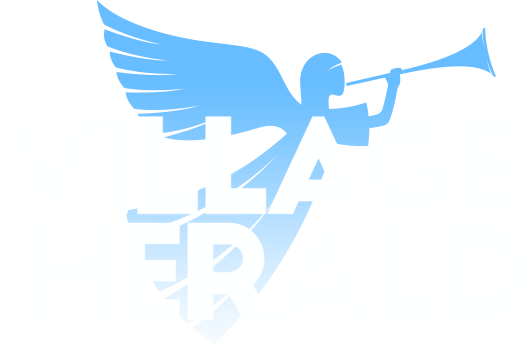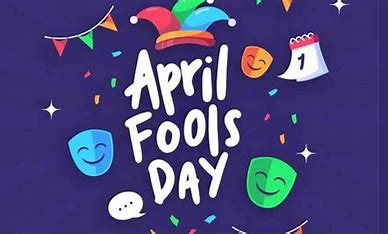Blackjack Strategy for Beginners
The game of Blackjack is a fan favourite among our Classic games here at Bingo Village, and for a good reason – it’s your chance to get even with the casino. By that, we mean Blackjack pits you against the dealer, and the whole point of Blackjack's strategy is to get closer to 21 than the dealer (without going over 21).
That makes Blackjack one of the only skill-based games found in online casinos, and we want you to know how you can make real money playing Blackjack. It requires more studying than other games at Bingo Village, so get your pen and paper ready.
The key to coming out ahead is understanding Blackjack hit-and-stand concepts. During the process of a game, you’ll also have options to double down or draw. We explore each of these Blackjack strategies and will guide you in learning how to win Blackjack so you can enjoy this timeless card game both online and at tables across the world.
If you came looking for a Blackjack chart, we’ve got you covered at the end of this article.
How to Play Blackjack for Beginners
Blackjack rules are all about knowing how to keep score while reading the room for clues. Kings, Queens, Jacks and Tens are worth a value of 10. An Ace has the value of 1 or 11, and the numbered cards are counted at face value.
The steps for how to play Blackjack are as follows:
- Place your bet. Before the cards are dealt, place your bet. Traditionally, this is done in a designated area on the table, but online blackjack is done on the user interface. Your minimum - maximum bets may vary per game.
- Receive your cards. Both the player and dealer get two cards, but the dealer only shows one card while the other is kept face down. You, as the player, always go first – and you have the option to take more cards or to Stay with the goal of getting closer to 21 (without going over).
- Decide whether to hit or stay. After you look at your cards, you’ll have the opportunity to hit or stay. Hitting means drawing another card from the dealer. Staying means keeping your hand the way it is.
- Double down (optional): If you are confident in your two-card hand, you can double down your bet – you’ll only receive one more card.
- Split pairs (optional): If you are dealt a pair of cards, you can split them into two separate hands. You’ll be required to place an additional bet equal to your original bet, and the dealer will give you an additional card for each of your split cards.
- Insurance (optional): If the dealer's face-up card is an ace, you can place an insurance bet. This bet is half of your original bet, and it will pay out 2-to-1 if the dealer gets blackjack.
- Dealer's turn. Once all of the players have taken their turns, the dealer will draw cards for their own hand. The dealer must draw until they reach 17 or more.
- Payouts. If your hand is closer to 21 than the dealer's hand and you do not go over 21, you win your bet on the spot. If your hand is the same as the dealer's hand, that’s called a Push. In this scenario, you get your bet back. But if your hand goes over 21, it’s a Bust, and you lose your wager.
Blackjack Strategy Basics
In the realm of casino games, blackjack stands as a pillar of strategic-minded fare. Knowing a basic Blackjack strategy invites you into a titillating blend of chance and calculated risk. While the outcome ultimately remains a gamble, the science of blackjack lies in thinking through the probabilities and analyzing the different ways you can get close to 21.
When Should You Hit?
Hitting – the act of drawing another card – tests your maiden’s luck, a new opportunity to improve your hand and come closer to the coveted 21. But this pursuit of perfection is risky, to be sure, since a single card can create a bust. A good rule of thumb is to hit when faced with a hand totalling 11 or less. With no fear of a bust, your new cards are sure to get you closer to a winning hand.
When is the Dealer Vulnerable?
If a dealer reveals a card 7 or higher, they have a number of blackjack strategy options to keep you from winning. But if the dealer reveals a 5 or 6, they’re certainly on the defensive – and if your hand is stronger than 12, it’s a good time to think about standing.
When Should You Stand?
While hitting may seem like a surefire way to reach your ultimate goal, sometimes the best move is no move – Standing. This means resisting the temptation to draw another card. It requires patience, discipline, and a strong understanding of probability. If your cards total 17 or higher, the risk of busting outweighs the potential benefits of drawing another card.
When Should You Split?
If you’ve drawn a pair, like two 9s, for instance, it’s a good idea to think about turning them into separate hands. The old adage “Always split Aces and Eights” still applies to this day – Aces can become either a one or an eleven. Splitting them gives you two opportunities to potentially form a blackjack, increasing your odds of winning.
So, 8’s have a high probability of forming a strong hand. When split, 8’s can potentially become a total of 16 and hard for the dealer to beat. Evaluating the dealer’s up-card is critical in this scenario because if they’ve drawn a 2, 3, or 5 with a low probability of a winning hand, you’re adding unnecessary risk by splitting.
When Should You Avoid Splitting?
It makes no sense to split small pairs like 2s, 3s, and 5s, as these cards are more likely to bust if drawn again.
When Should You Double Down?
For beginners, doubling may produce sweaty palms. But for those with a Blackjack strategy in mind, this tactic can be a potent tool, turning your fortunes in an effort to snatch victory from the jaws of defeat. Note, that this strategy applies only in single-deck Blackjack.
Here are some times you should double down in Blackjack:
- A hard 11 vs. an Ace. Even the dealer’s up-card hints at a strong hand; you can still double down if you hold an 11 or Ace. Players holding either of these cards only need a 10 or a 9 to reach a winning total.
- A hard 9 vs. a 2. Again, you have the upper hand in this scenario and can put the dealer’s back against the wall by doubling down vs. hitting.
- A hard 8 vs. a 5 or 6. This is an interesting hand, and your strategy lies in the hand value of 4. If the hard 8 is formed by two fours, splitting the 4s would actually be the best Blackjack strategy.
Blackjack Strategy Charts
Now, for the last part of your homework. Remember these tables, and you’ll be truly ready to enter any Blackjack game, from the comfort of home right here at Bingo Village all the way to the resort casinos that have tables upon tables for you to play Blackjack – and win.
Hit or Stand
Use this visual to understand how well you fare against the dealer. This Blackjack strategy chart assumes your pair of cards is indicated by the total on the left, and the dealer’s up-card is indicated at the top.
“H” indicates an opportunity to hit
“D” indicates the equal opportunity to double down or hit
“S” indicates an opportunity to stand
“D-S” indicates the equal opportunity to double down or stand

Double Down
Here’s a quick reference guide for knowing when to double down in Blackjack. It’s important to know the maneuver is risky under most circumstances, and the chart indicates opportunities to secure a bigger buyout where your probabilities of winning are highest.
“D” indicates an opportunity to double down.

5 Blackjack Strategies to Improve Your Odds
As with Poker and some of the other Classic games you can play at Bingo Village, knowing the probabilities is critical going into Blackjack. While we recommend studying the charts above, here are a few final rules of thumb to consider when learning how to play Blackjack.
- Double down on a hard 11. When your hand totals 11 and doesn't include an ace, double down your bet. This increases your chances of winning, as you'll get a bonus card but won't risk going bust.
- Hit a hard 12 against a dealer's 2 or 3. If your hand totals 12 without an ace and the dealer shows a 2 or 3, hit. You only need to worry about four cards that can make you bust: the Jack, Queen, King, and 10.
- Double down on 10 when the dealer's up-card is 9 or less. When your hand totals 10 and the dealer shows a 9 or lower, double down. This gives you a better chance of winning, as you'll get an extra card and won't bust.
- Double down A-2 through A-7 when the dealer's up-card is a 5 or 6. If your hand consists of an ace and a 2 through 7, and the dealer shows a 5 or 6, double down. This increases your chances of scoring a 21, as you'll get an extra card.
- Never make the insurance bet. Avoid the insurance bet, even if the dealer's up-card is an ace. The house edge on this bet is high, and it's not worth the risk in the long run.
The Player vs. The Dealer
Blackjack is not merely a game of chance – it's a test of wills. The swings and misses come as your dealer pitches each card, and like in baseball, you need to know when to hit. By understanding when to hit in Blackjack, it’s down to your mettle versus the dealer’s poise. By practicing these Blackjack strategies, you can grow yourself from a sideline viewer to a player by knowing the game’s strategic nuances. So, step onto the Blackjack ball field, embrace the ebbs and flows of the game, and let your newfound strategy guide you toward a winning endeavour.
One More Blackjack Strategy: The Martingale System
Once you've got a good grip on the Blackjack basic strategy we outlined above, you’ll be ready to explore more nuanced betting strategies. Although we don’t recommend card counting for anyone short of genius-level IQs, you can still learn to adjust your wagering patterns to maximize your chances of winning at Blackjack.
Among the most well-known strategies is the Martingale system. Not for the faint of heart, this betting strategy involves doubling your bet after each loss. This progressive wagering strategy assumes you have already managed your bankroll, stuck to your pre-determined wagering limits, and understand the probabilities involved in Blackjack.
The idea of the Martingale strategy is that in Blackjack, you will win eventually, and as you scale your wagering, the hand in which you win will help even out the previous losses you suffered.
Preparing for Blackjack at Land-Based Casinos
Now that you’ve got the foundation of Blackjack success don’t forget to print your Blackjack strategy charts. These were carefully crafted by blackjack masters, providing evergreen opportunities for all possible scenarios guided by probabilities. Your decisions to hit, stand, double down, or split also depend on your ability to stay calm and not feel pressured. B
The Advantage of Playing Blackjack Online
In the digital age, your pursuit of blackjack mastery is assisted by an endless array of bonus deposits along with the privacy of playing from your own home – imagine how much less stressful it is to play Blackjack at Bingo Village in your PJ versus a dealer in a suit and tie whose aggressive motioning cause you to think twice about each move. With a few clicks of a mouse, you gain access to a vast array of blackjack variations, each offering unique challenges and rewards. Moreover, the convenience of online gaming allows you to delve into the world of blackjack at your own pace, refining your skills without the pressure of the casino floor.
Read more about bingo games, How to play bingo, and bingo near me to know everything about online and offline bingo.
 and enjoy 10 spins every day for the first 10 days in the Kingdom.
and enjoy 10 spins every day for the first 10 days in the Kingdom.




